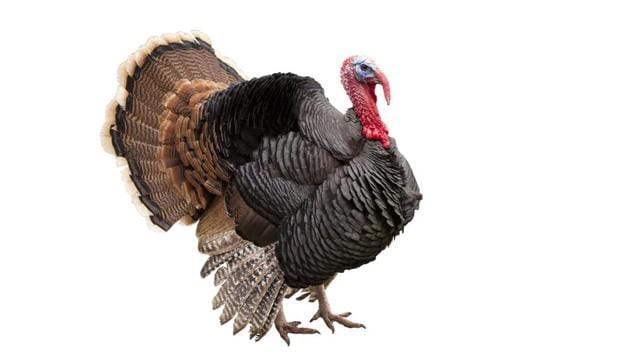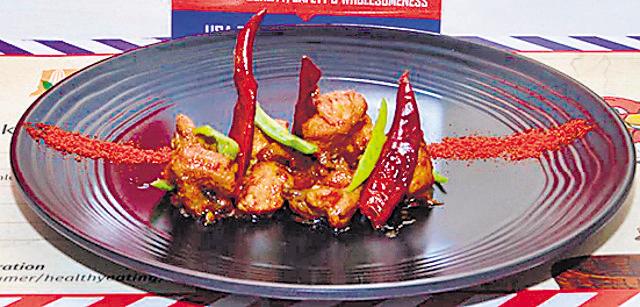Gobble gobble: The Christmas bird
While most of us think of turkey as imported meat, there are farms breeding it in India
“… and grandpapa always will toddle down, all the way to Newgate Market, to buy the turkey, which he engages a porter to bring home behind him in triumph” - Charles Dickens, A Christmas Dinner, 1836

A few years later, in the popular classic, A Christmas Carol, published in 1843, Dickens again alludes to the Christmas turkey, when a freshly reformed Ebenezer Scrooge orders a turkey “twice the size of Tiny Tim” as a gift to his poor employee Bob Cratchit’s family. (Tiny Tim is Cratchit’s young, crippled son).
According to an article on the British Library website, while the “goose had been established as Christmas fare since the time of Elizabeth I”, the “turkey too, had a long tradition of Christmas consumption – since the 16th century when it was introduced to Europe by the conquistadors”.
In India, the turkey’s arrival is more recent. Globalisation and the increasing exposure to Western cultures helped put the bird on restaurant menus as festive fare. Imported turkey meat for cooking was available in India since 2000, says chef Sabyasachi Gorai, and last year, the USA Poultry and Egg Export Council started marketing the meat here.
But turkey was already being bred in India. “In the early 1990s, the Central Poultry Development Organisation (CPDO) wanted to diversify into breeding poultry other than chicken and started giving farmers duck and turkey chicks,” says Mahesh PS, director, Central Poultry Development Organisation and Training Institute (CPDOTI), Bengaluru.
Initially, turkey farming was introduced in Kerala, Karnataka, Tamil Nadu, Uttar Pradesh and Punjab, he says. An internet search throws up names of turkey farms in West Bengal, Delhi and many other places. (But many of these farms are unorganised and may not breed the birds every year.) It’s in the south – in states like Tamil Nadu and Karnataka, especially – that it has flourished, says Mahesh.
Turkey meat is healthy. “It is a leaner protein source compared to read meat and even chicken. The breast is lower in calories compared to the legs, thighs and wings,” says nutritionist Kavita Devgan. “It packs in minerals like potassium and zinc and the difficult-to-find selenium and lots of B vitamins. It’s naturally low sodium and lower in cholesterol compared to other meats.”
Still, the demand for turkey remains mostly seasonal. And with this in mind, for most farmers it is a periodic business, with birds being reared for the December festivities - though in Tamil Nadu, Mahesh says, farmers have started breeding a smaller variety of the bird, weighing only about 4-5 kg, which is in demand in restaurant through the year for making biryani.
Lagishetty Bhoopathi, a poultry farmer in Telangana, started breeding turkeys commercially in 2005 with 100 birds. Today, his farm has about 1000-1200 birds ready in December.
It’s a profitable crop for farmers. “For an investment of approximately ₹800 – adult birds weigh about 6 -10 kg – the returns are about ₹250-300 per live kg. The profit is about 50%,” says Bhoopathi. But the birds need care. The CPDO gives farmers day-old chicks. “Then for the first 30 days, it is very important to give them proper heat,” says Bhoopathi.
Nutritional needs have to be taken care of. “The chicks need a high-protein diet. We advise farmers to feed them boiled eggs, peas etc. After eight weeks, they can be let out to graze,” says Mahesh. “About 75% of their diet after that consists of greens, 25% is grains. It takes about six months for the birds to reach maturity,” says Mahesh.
About three-four lakh turkeys are bred in India every year, he adds. Of these, about two lakh are consumed during the Christmas season.
Tips for cooking turkey at home and two recipes to try
Cook different parts of the bird separately. An entire roast turkey may look great on your Christmas table, but it is difficult to finish unless you are having a big party. And as the leftover meat begins to dry, you’ll have no option but to put it in salads and sandwiches, says chef Sabyasachi Gorai.
The turkey breast cooks very quickly, perhaps even quicker than chicken. It is perfect for grills and roasts, he says. Just marinate with spices and make it into kebabs.
The turkey leg is like red meat. You have to braise it and use in curries and stews.The offals, neck and wings are very flavourful and perfect to be had in soups during winter, says Gorai.

Turkey Laal Maas
Ingredients:
Turkey legs: 2, cut in 2 inch cubes
without bones
Kashmiri chillies: 15
Coriander seeds: 2 tbsp
Turmeric powder: 1/2 tsp
Garlic paste: 4 tbsp
Curd: 1 cup
Refined oil: 1/4 cup
Sliced onions: 4
Salt: to taste
Garam masala powder: 4 tbsp
Chopped coriander: 4 tbsp
Preparation
Soak the red chilies/Kashmiri chillies and coriander seeds in a bowl of water. After 10 minutes, drain and put in the food processor. Add the turmeric powder and garlic paste. Add a little bit of water and make into a smooth paste.
Mix this paste with the yogurt and then add the meat to it. Mix well. Keep aside to marinate for an hour.
Heat oil in a deep pan on medium heat. Add the onions and fry till golden brown. Stir often to prevent burning. Remove and soak excess oil on paper towels. Keep a little aside to garnish the dish and put the rest into the blender or food processor. Grind to a smooth paste.
Heat leftover oil and add onion paste to it and fry for 1 to 2 minutes. Now add the meat and its marinade. Fry till the oil begins to separate from the masala. Stir often. Season with salt to taste.
When the meat is cooked, remove the pan from the heat and sprinkle garam masala. Cover and keep aside for 2 to 3 minutes. Open the cover and garnish with previously fried onions and chopped fresh coriander leaves. Serve hot with bajra roti.

Roast Turkey
Ingredients
1 free-range turkey: 5 to 5.5 kg
Sea salt: to taste
Freshly ground black pepper:
to taste
Onions, peeled and halved: 2
Sweet potato, washed,
peeled and diced: 250 gm
Lemon, halved: 1
Bulb of garlic, halved horizontally: 1
Bay leaves: 6
Olive oil: 150 ml
Thick slices of pumpkin: 8
Fresh cream: 200 ml
For lemon, parsley and garlic butter
Butter, at room temperature: 350 gm
Refined oil: 2 tbsp
Finely grated zest and juice: 2 lemons
Garlic cloves, peeled and chopped: 8
Coriander (leaves only), washed & chopped: ¼ cup
Preparation
Preheat the oven to 220°C. Meanwhile, put the butter into a large bowl and season with salt and pepper. Add the olive oil and mix. Add the lemon zest and juice, crushed garlic and chopped parsley. Mix well.
Remove the giblets from the turkey cavity. Season the cavity well with salt and pepper, then stuff with the onions, sweet potato, lemon, garlic halves and 2 bay leaves.
Stuff half the flavoured butter into the opened spaces of the legs and breast under the skin.
Place the bird in a large roasting tray, breast side up. Spread the rest of the butter all over the skin. Season well with salt and pepper, then drizzle with a little refined oil.
Roast the turkey for 15 minutes. Take it out, baste with the pan juices and lay the pumpkin slices over the breast to keep it moist. Baste again. Lower the setting to 180°C and cook for about 2 1⁄2 hours.
Serve with gravy (made from the vegetables roasted with the turkey), corn on the cob, pulao and lettuce salad.
Recipes courtesy: Chef Sabyasachi Gorai






